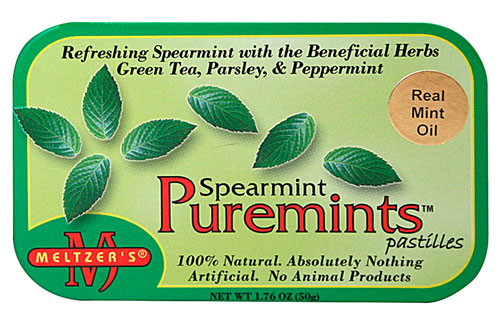When you think of green foods, you probably think of vegetables like spinach and broccoli. Yet mint is another type of green food that may be less popular, but still comes with a lot of health benefits.
Keep reading to learn about how using mint can benefit your health and get ideas for what to do with it.

What is mint?
Mint is an herb that has thin, fragrant leaves that are completely edible. There are many different types of mint, including spearmint and peppermint. All of these belong to the
mentha plant family.
When people think of mint, they may be thinking of menthol.
Menthol is a chemical compound naturally found in peppermint but also commonly man-made in a lab. Because of its soothing effects, menthol is commonly added to things like cough drops, medicines to relieve cold sores and sore throats, and topical creams to relieve body pain. It is also commonly added to tobacco products to make them more desirable, as well as chewing gum and mouthwash.
What are the mint benefits I should know?
Mint has many health benefits, including:
May relieve symptoms of IBS†
Irritable bowel syndrome (IBS) is a very common collection of negative digestive symptoms such as gas, bloating, stomach cramping and diarrhea and/or constipation. Peppermint supplements have been
shown to help soothe the gut, and research has reported that taking peppermint oil capsules is a safe and effective short-term treatment for IBS.
†
May support a strong immune system†
An in vitro study showed that peppermint has significant antimicrobial and antiviral activities, as well as antitumor and antiallergenic potential.
† It also has antioxidant properties.
† Each of these things supports the immune system from fighting off harmful microorganisms and supporting overall health.
† However, more studies done in humans are needed to confirm the findings.
Supports oral health†
Mint is well known for its ability to mask bad breath, but its benefits extend beyond the natural fresh feeling.
Research has shown that peppermint essential oil may help fight off bacteria and other pathogens that can form in the mouth.
† It is highly used and recommended amongst dentists to fight off oral germs.
May serve as a natural decongestant
The menthol in peppermint works as a
natural decongestant. It helps shrink swollen membranes in the nose and helps make it easier to breathe. This is why it is a common ingredient in over-the-counter cold and flu medicines.
Helps relieve indigestion†
Symptoms of indigestion occur when food sits in the stomach too long before moving through the digestive tract, causing things like an uncomfortable fullness, bloating and sometimes heartburn. Peppermint oil can help prevent and/or relieve these symptoms by relaxing the muscles in the digestive tract, and
research has supported its use in functional dyspepsia, which is another name for indigestion.
†
Can work as a natural pain reliever†
The menthol in mint provides a
cooling sensation when applied to the skin. This can help relieve pain, and is why it is used as a common ingredient to provide temporary relief for things like arthritis, headaches,
muscle and joint pain, and backaches. In addition, a
study found that peppermint water can help soothe sore and cracked nipples that can result from breastfeeding, thus reducing pain.
In addition to each of these health benefits, mint has a great flavor, making it pleasant to enjoy in many ways.
How to use mint?
Mint is commonly used in many foods and beverages, ranging from beverages to sauces, salads and desserts. It also has other, non-food related uses.
Culinary uses for fresh mint include:
- Adding robust flavor to poultry dishes, such as these spinach-feta turkey mini meatloaves
- As a flavoring to plant-based meals, like this roasted sweet potato and tofu rice bowl with cilantro mint yogurt, or in quinoa tabbouleh
- In a salad, such as this watermelon, feta & mint salad or this edamame and chickpea quinoa salad with lemon-mint vinaigrette
- As a garnish, such as for this raspberry pomegranate oat smoothie or a fancy cocktail or “mocktail”
- In desserts, like this berry coconut yogurt parfait, these no-bake chocolate mint pistachio bars, or honeydew popsicles with mint and lime
- In tea, or as a flavoring agent to water
Other ways to use mint include:
- Taking pure peppermint capsules as needed for symptoms of IBS or indigestion
- Inhaling mint essential oil to clear sinus congestion
- Rubbing mint essential oil on the temples, limbs, or other areas that may be experiencing pain to aid relief
In Summary
Mint is a festive green food that comes with a lot of health benefits. With so many ways to use it, you really can’t go wrong. It is best to use natural and pure forms of mint rather than those that are man-made in order to receive the most benefit. Always be sure to check with your medical doctor before using over-the-counter mint supplements.
†These statements have not been approved by the Food and Drug Administration. These products are not intended to diagnose, treat, cure or prevent disease.






